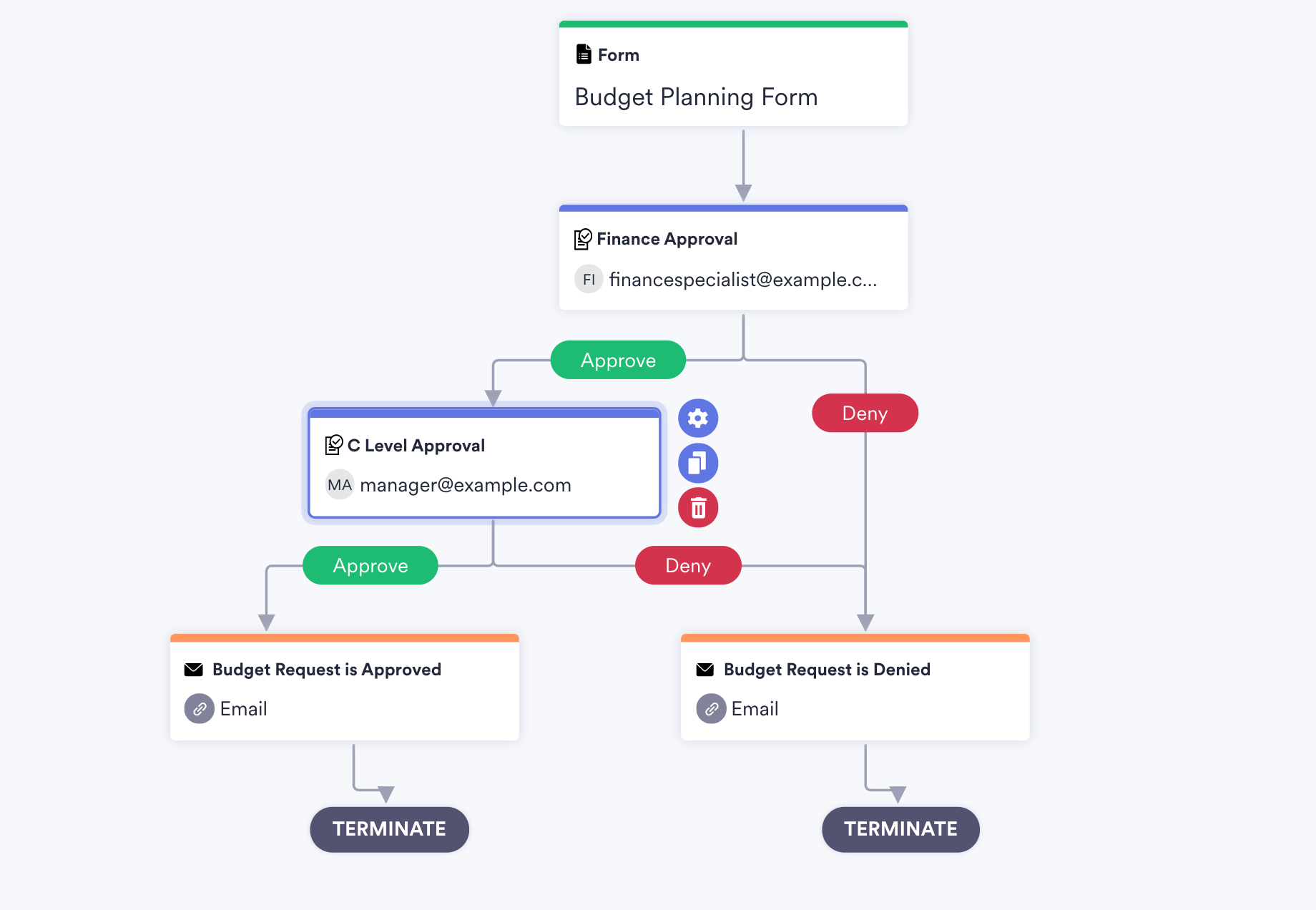Ways to automate taks
- Connect your to-do list and calendar
- Streamline repetitive tasks
- Take it to the cloud
- Embrace the possibilities of robotic process automation
In business, you don’t have to do everything yourself. You have access to a variety of resources — from your own team to local chambers of commerce.
But of all your resources, the most important are the tools that automate much of the grunge work of running a company. From collecting sales leads and reimbursing expenses to approving invoices and surveying customers, automation saves you priceless time and energy.
What’s more, as many are still recovering from the major disruptions of the pandemic, organizations have been challenged with handling more moving parts than in the past, which can result in more distractions, more repetitive tasks, and more burnout. That’s why, in 2024, automation is critical.
This year, make your business better with these four ways to automate tasks.
1. Connect your to-do list and calendar
Life’s too short to waste time staring at your calendar and wondering if you have time for any of the things you actually need to do. Because your calendar is often connected to the lengthy to-do list that awaits you each day, you should integrate your tasks and calendar as much as possible.
Plenty of tools unite your calendar and productivity apps. For instance, Zapier connects Google Calendar to productivity tools like Asana, Trello, and Todoist, as well as videoconferencing platforms such as Zoom.
When it comes to meetings that are actually essential, you can stop playing phone and email tag with colleagues and stakeholders. Look for programs that make it easy to automate tasks like scheduling recurring meetings and finding good times to meet with others.
Sync your calendar with communication tools like Slack to prevent double booking. Other programs check calendars to automatically schedule meetings at a time that works for everyone.
2. Streamline repetitive tasks
Simply put, if your workflow doesn’t automate tasks, your project management strategy is already failing. Employees around the world spend 22 percent of their time on repetitive tasks that keep them from reaching their full potential at work — and keep their organizations from reaching full efficiency.
The easiest way to simplify repetitive tasks is to invest in software that automates your common approval processes. One free and easy-to-use tool that helps you accomplish this is Jotform Approvals.
Within its drag-and-drop interface, you can arrange customizable forms and users into a workflow that requires little interference. And with plenty of approval templates, you can get started approving invoices, budgets, purchase orders, and other requests.
In addition to its approvals platform, Jotform’s online customizable forms quickly collect needed information and display it in Jotform Tables, where you can analyze submissions and create reports that may show you where else in your organization you can automate tasks.
3. Take it to the cloud
While it may be hard to find the right automation software for your needs, requiring one must-have feature will help whittle down your search: cloud-based technology.
Cloud-based programs offer several benefits, such as more safety and better accessibility, compared to software housed natively in work computers.
It’s easier to automate tasks when you can retrieve their moving parts from anywhere, and you never have to worry about backing up information. Plus, storing all company information in the cloud will simplify work for your remote and hybrid employees, and create the ultimate resource for anyone who travels for work.
Depending on how much coding your team can do, a cloud program can be as tailored to your needs as you want it to be. Low-code solutions like Jotform can integrate with a variety of software and platforms, allowing you to combine the best of several cloud-based apps to streamline your processes.
4. Embrace the possibilities of robotic process automation
Robotic process automation (RPA) sounds like a complicated plot point in a science fiction film. But the rising popularity of RPA software proves otherwise.
EY compares RPA to a virtual employee, one that can take on about 60 percent of a company’s processes. RPA is especially useful for companies to automate tasks such as data entry and calculations.
One trend within RPA is the use of artificial intelligence (AI). We already use AI each day when we talk to Google or Alexa or a customer service bot. It won’t be long before AI becomes more important for businesses. Research and advisory company Gartner predicts that half of enterprises will use AI platforms by 2025.
It’s easy to think of automation as a far-off and unattainable goal that you don’t have time to implement. But the truth is, automation is now the norm — not the exception — across many industries and departments embracing the automation first mindset.
When you’re automating tasks, you’re taking care of your employees, preparing yourself to pivot quickly during industry changes, and reaching your organization’s goals.
Technology photo created by freepik – www.freepik.com

































































Send Comment: